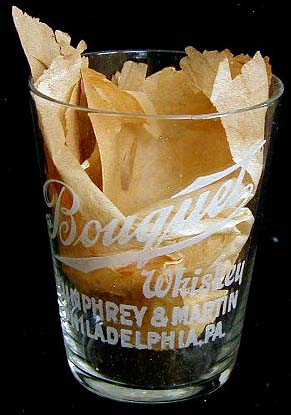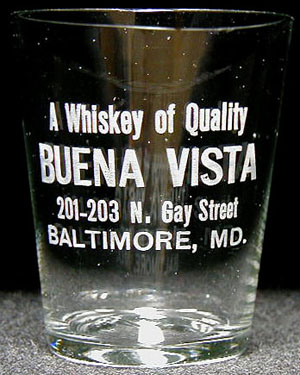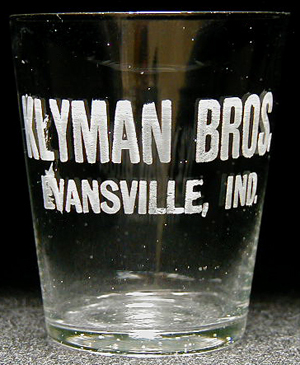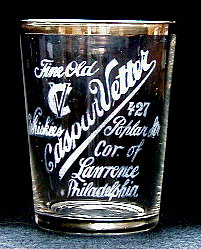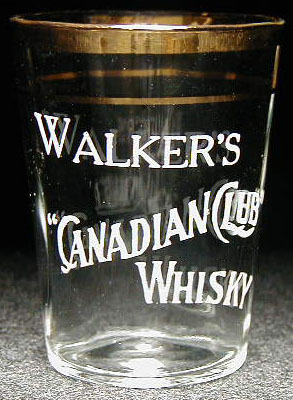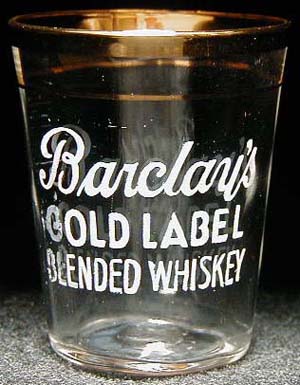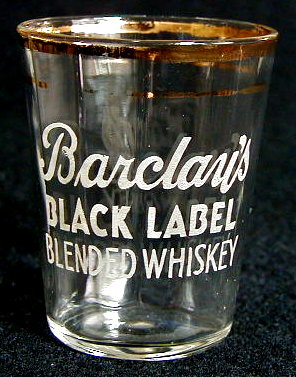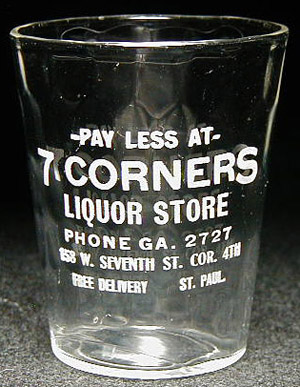
|
The
golden era of the thin-walled whiskey glass came to an inglorious end
with National Prohibition in 1920. The armies of Prohibition, also known as "the Drys", were fueled by religious fervor. They capitalized on public disgust of open displays of drunkeness, and on sympathy for mothers and children abandoned by their father in favor of the whiskey bottle and the saloon. Prohibitionists had been making serious inroads in many regions of the country for decades. Maine enacted State Prohibition in 1851 and Kansas went dry in 1880, which probably explains why there are no known liquor advertising glasses from these states (see when your favorite state succumbed to Prohibition). By the time the time the Volstead Act was passed into law, most liquor-related establishments in states where the Wets still prevailed appear to have been advertising via shot-glass giveaways. Glasses from this time are typically inscribed very simply, however, recording the name and address of the establishment in plain block letters and no monogram or detailed design.
When National Prohibition came into effect in January, 1920, it effectively put an end to the production of blown whiskey glasses as a form of advertising. Existing stocks of whiskey were moved to concentration warehouses and placed under close government supervision. For the next 14 years, whiskey could only be obtained legally with a Physician's prescription. Alcohol had long been used for medicinal purposes so its continued dispensation by Pharmacists was not so surprising. A few of the larger distilleries continued operating to replenish stocks of medicinal whiskey and produce alcohol for industrial use, but the bulk shut down their copper stills, closed their doors, and untimately were dismantled.
Although data is difficult to come by, per capita alcohol consumption may actually have increased during Prohibition thanks largely to the diligent efforts of bootleggers, the most famous being Al Capone. The primary source of whiskey was Canada. Hiram Walker had built a massive plant at Walkerville across the border from Detroit, while Samuel Bronfman of Seagrams fame was running plants in Montreal and importing various spirits from across the Atlantic. Shot glasses advertising Hiram Walker Co. Ltd. products are relatively common and believed to date to the Prohibition era. Although they are gold banded and look as if they might be pre-Pro, they're small, have relatively thick paneled walls, and have been made by being pressed into a mold arther than being blown. Barclay glasses such as the Gold Label and Black label below are also believed to be Canadian and to date to the Prohibition era.
|
|||||||||||||||||||||
Please contact the glassmaster with questions or comments
